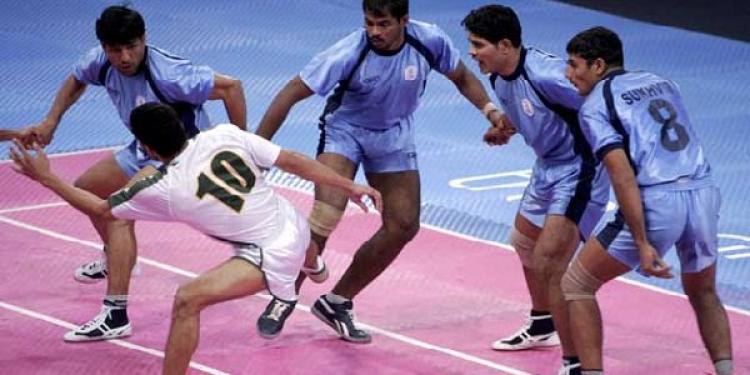Meet the Interesting South Asian Sport, Kabaddi
Posted: April 29, 2015
Updated: October 6, 2017

Read this article if you would like to become familiar with the popular Indian sport, Kabaddi.
Kabaddi originates from India as we have mentioned above, but is popular in many other South Asian countries as well, such as in Nepal, Bangladesh, Pakistan and Iran for example. Our aim was to present the history and the rules of this great sport so that players can get to know it a bit better.
The history of Kabaddi started thousands of years ago
Indian gambling news report that Kabaddi was played as early as in the ancient times already. The sport was practices in schools as well and was very popular as soon as it came into existence. Many different variations started spreading of the sport, such as Hututu or Sadugudu and many others. However, these variations have no certain fixed rules, they all differ depending on where it is being played. Unlike Kabaddi, which as its own set of rules, but we will talk about that later on.
• Kabaddi was first played in ancient India
• India won the first Kabaddi Wolrd Cup
• The raider has to tag defenders and get back to his/her own field
The rules of Kabaddi were set and framed in 1950 after the All India Kabaddi Federation (AIKF) was established and started working. The sport was popularized in 1979 in Japan and the same year, a clash between Bangladesh and India national teams took place. The next year, the first Asian Kabaddi Championship was held where Bangladesh finished as runner-up upon losing the finals against the host nation.
At that year, 5 teams run on the competition altogether, as the other participants were Nepal, Malaysia and Japan. 10 years later the game took part in the Asian Games in Beijing where India once again proved themselves to be the best Kabaddi team, but this time, they won out of 7 teams.
The rules of the popular Indian sport are rather simple

online gambling sites in India report that the game happens on a 10×13m field for men and on a 8×12 m for women. 7 players start the game and each team has 3 supplementary players in reserve. The games lasts for 2 × 20 minutes with a five minute break in between, where the teams switch halves on the field.
One team sends a raider to the other half. The raider’s task is to touch one or more players of the opposite team and then the raider has to get back to their own half. All this by only taking one breath and chanting “kabaddi, kabaddi”. By that, the raider will receive one point, but if (s)he inhales before returning to her/his field, the team will not get any points. They also won’t get points if they return without tagging any of the team members.
The defenders are trying to tackle and wrestle the raider so that they can keep them on the half until the raider breathes again. If a defender does not manage to catch the raider, they will be out of the game for good and will not be able to come back anymore. For each sent off player, the opposing team receives a point. The team receives an extra 3 points if the opposing team has lost all their players.
The game is led and supervised by 6 officials: one of them is a referee and there is two umpires who help his work. There is also a scorer and two assistant scorers, they are the ones who make sure that everything in the game goes as legitimate and by the rules.
Kabaddi leagues can be found all over the world

mobile betting sites report that kabaddi leagues are spreading throughout the entire world. The most prestigious event in this sport is obviously the World Cup which was first played in 2004 and then it was held every 3 years, however, it has become an annual tournament since 2010. So far only India managed to win this trophy.
The Women’s World Cup was first held in 2012, and then in 2013. Only India managed to win the World Cup of Kabaddi in Women’s as well as men. There are other Kabaddi league such as the Pro Kabaddi League which takes place in India and was introduced in 2014. There is also a UK Kabaddi League which was launched in 2013. Teams from Pakistan, India, Canada, England and the USA participated in this competition.













